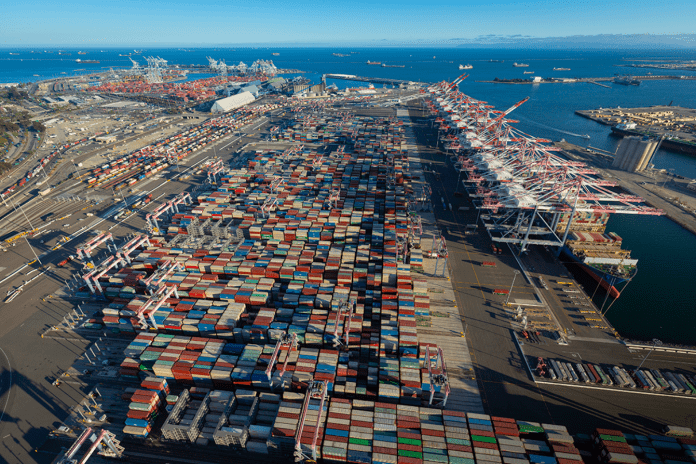The post-pandemic trade slowdown in the United States is impacting household goods demand far more seriously than industrial freight demand, according to analysts appearing on the latest episode of The Freight Buyers’ Club podcast.
This can explain why since the second half of the last year, the Transpacific container trade has seen freight rates and demand drop far more significantly than the Transatlantic. Additionally, it can explain why domestic trucking and air cargo markets have shown downward trends.
Jason Miller, Interim Chairperson of the Department of Supply Chain Management at Michigan State University, Eli Broad College of Business, believes the US economy is not displaying any serious “red flag indicators” that an economic recession is imminent but is suffering “a freight recession” that is affecting logistics and shipping lanes in varied ways.
He noted that US credit card delinquency rates were still below pre-Covid rates, mortgage delinquency rates were falling, wage growth was still “very robust” and demand across key parts of the economy including motor vehicles, parts, heavy equipment and “everything associated with infrastructure” was performing well.
But demand for imported non-industrial products typically shipped by container or via air freight solutions such as clothing, computers, phones and furniture had significantly fallen away.
Miller pointed out that “anything single-family housing related has been very much hit by this huge cooldown of housing activity of roughly 30% from this time last year.” This is one main reason why the US trucking market has been in recession since the third quarter of 2022, according to Miller.
Judah Levine, Head of Research at Freightos, added that it can also help to understand why the westbound Transatlantic container shipping market has been performing far better than imports to the US from Asia.
Levine believes that the current US freight recession was in part due to heavy imports in the first half of 2022 which had left many retailers with huge inventories and that this had impacted the Transpacific head haul market far more than US imports from Europe.
“If you look at the trans-Atlantic, rates there are still more than double what they were in 2019,” he noted.
Even though rates on the trade have fallen around 50% since their peak earlier this year, Levine said the decline had been far less severe than on the Transpcific where spot freight rates had collapsed.
The reason for this is the fact that the two trades were driven by different types of imports, according to Levine, who considers consumer goods as the main driver in the Transpacific. “What people were buying now was also very different than during the pandemic when bulky household goods were in high demand,” he noted.
On the other hand, Levine said that on the Transatlantic, there is a different mix of goods, with the demand still higher than in 2019, despite the current decline.
Examining individual tariff codes in detail, Miller found that the Transpacific boom in 2021 and the second half of 2022 was “really primary housing”.
By contrast, the containerised goods being shipped in heavy volumes on the Transatlantic from Europe to the US in 2022 were products such as Portland cement, gypsum, electrical storage batteries and other chemical products.
“So, it’s much more that industrial side of things, and especially the non-residential construction space, which is still very strong right now in the US,” he commented, pointing out, “that’s why we just can’t generalize.“
He added that “Eastbound trans-Pacific is down, but that doesn’t mean that westbound trans-Atlantic is going to fall off a cliff in the same manner.”







